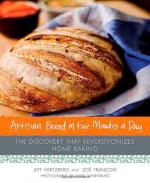|
This section contains 477 words (approx. 2 pages at 300 words per page) |

|
Norris's technique places Bread firmly in rather generic category: realism. Meaning more than a preference for the possible over the magical, realism refers to a variety of literary techniques and values. In the case of Bread, the reader should recognize three main traits that qualify the work as a realist novel.
First, Norris pays close attention to detail and uses the seemingly insignificant minutiae to make profound statements about the personalities of his characters.
This technique was perfected by two of Norris's American predecessors, William Dean Howells and Theodore Dreiser. In works like Howells' The Rise of Silas Lapham (1885) and Drieser's Sister Carrie (1901) such facts as the decoration of a room or the make of the suitcase a woman carries bear a great deal of narrative weight. In Bread, Jeannette's clothes, entertainments, and other possessions place her squarely in a class of urban workers whose luxuries are fleeting...
|
This section contains 477 words (approx. 2 pages at 300 words per page) |

|




